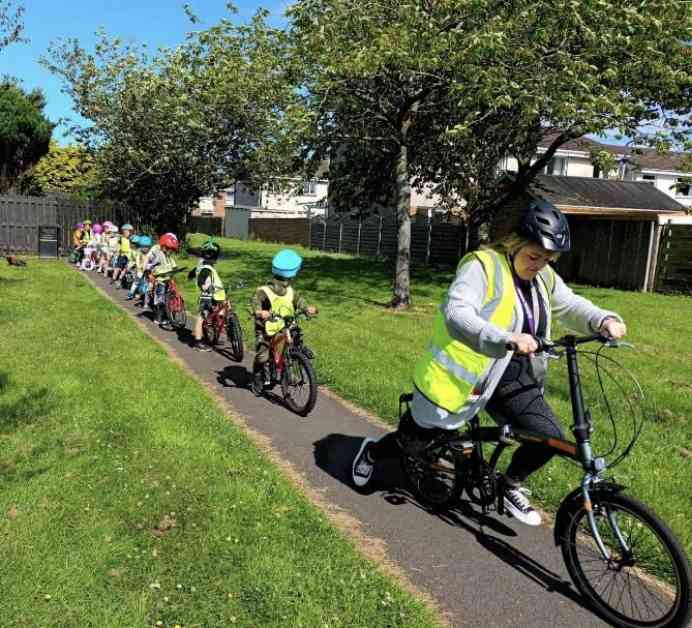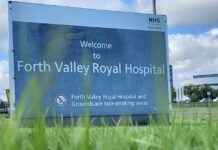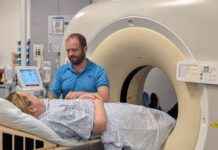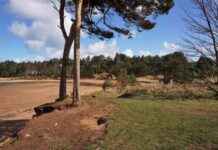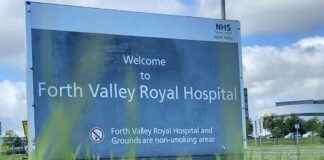Developing a World-Class Active Travel Network: Stirling-Clacks City Deal Initiative
The push for a “world-class active travel culture” and network in Stirling and Clackmannanshire is gaining momentum as business cases for this ambitious initiative are set to be approved as part of the city deal. The Stirling and Clackmannanshire City Region Deal Joint Committee is scheduled to convene to discuss the active travel program, with the potential approval of outline business cases for five key routes in the region.
These proposed routes, such as Alloa to Springkerse via Manor Powis and Fishcross to the University of Stirling, are integral to the vision of increasing the proportion of trips made by active travel modes to 20% in the communities they serve. The overarching goal of the program by 2030 is to establish 37km of high-quality, safe active travel routes that will connect people of all ages and mobility levels to education, recreation, and employment hubs.
The anticipated outcomes of this initiative extend beyond promoting active modes of transportation. The scheme is also designed to contribute to reducing carbon emissions and fostering sustainable transport alternatives. By investing in the development of these routes, the project aims to enhance the health and well-being of communities, address transport poverty by providing inclusive options, combat childhood obesity, improve air quality, and encourage positive behavior change to decrease unnecessary car journeys.
In addition to enhancing connectivity between Stirling and Clackmannanshire, the active travel network is expected to have a positive impact on the regional economy. Investment in active travel infrastructure is seen as a means to improve regional connectivity, particularly among rural communities, and provide better access to employment and education opportunities. Furthermore, the improved infrastructure is anticipated to boost tourism with connections to the existing National Cycle Network.
The proposed funding for this ambitious project includes nearly £4.5 million from the city deal, with officers planning to secure additional funds from Sustrans, bringing the total expenditure to £18.6 million. The next step in the process involves progressing the outline business cases, a task expected to take 10-12 months to complete.
Benefits of Active Travel Infrastructure
Active travel infrastructure, such as dedicated walking and cycling paths, not only promotes physical activity but also has far-reaching benefits for communities and the environment. By prioritizing active modes of transportation, cities can reduce traffic congestion, improve air quality, and create more livable urban spaces.
In the context of the Stirling-Clacks City Deal Initiative, the development of high-quality, safe active travel routes is expected to have a transformative impact on the region. By providing residents with accessible and attractive alternatives to car travel, the initiative aims to reduce carbon emissions, promote healthier lifestyles, and foster a sense of community connectivity.
Community Engagement and Collaboration
Central to the success of the active travel network in Stirling and Clackmannanshire is robust community engagement and collaboration. Involving local residents, businesses, and organizations in the planning and implementation process ensures that the infrastructure meets the diverse needs of the community.
Engaging stakeholders in the decision-making process can lead to more sustainable and inclusive outcomes. By soliciting input from a wide range of voices, the active travel network can be tailored to suit the unique characteristics and preferences of the region, ultimately increasing its effectiveness and acceptance among residents.
Future Growth and Sustainability
Looking ahead, the development of a world-class active travel network in Stirling and Clackmannanshire has the potential to catalyze future growth and sustainability in the region. By prioritizing active modes of transportation, the initiative aligns with global efforts to combat climate change and create more sustainable urban environments.
The long-term benefits of investing in active travel infrastructure extend beyond immediate health and environmental impacts. By fostering a culture of active transportation, Stirling and Clackmannanshire can position themselves as leaders in sustainable urban development, attracting residents, businesses, and visitors who value livable, connected communities.
As the city deal progresses and the active travel network takes shape, it is essential to continue prioritizing collaboration, community engagement, and sustainability to ensure the success and longevity of this transformative initiative. By working together towards a common goal of creating a world-class active travel network, Stirling and Clackmannanshire can pave the way for a healthier, more sustainable future for all.

